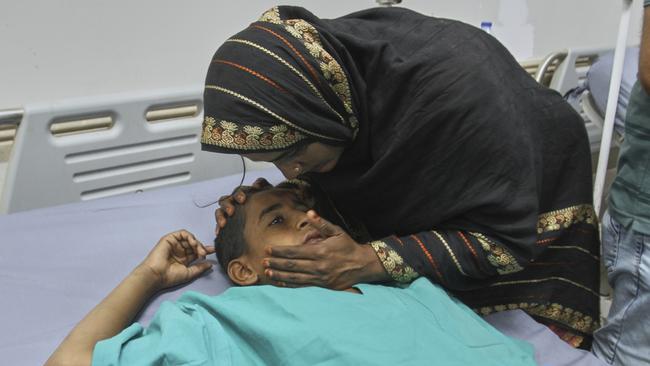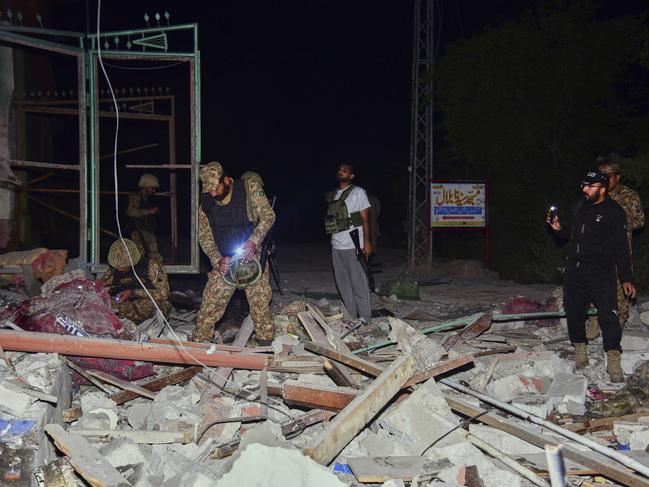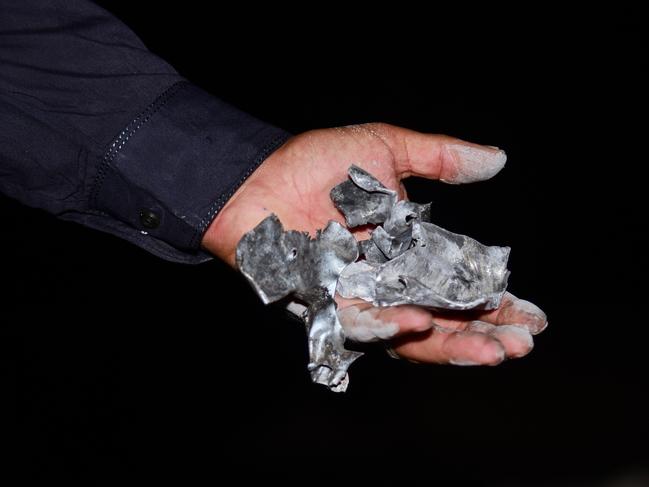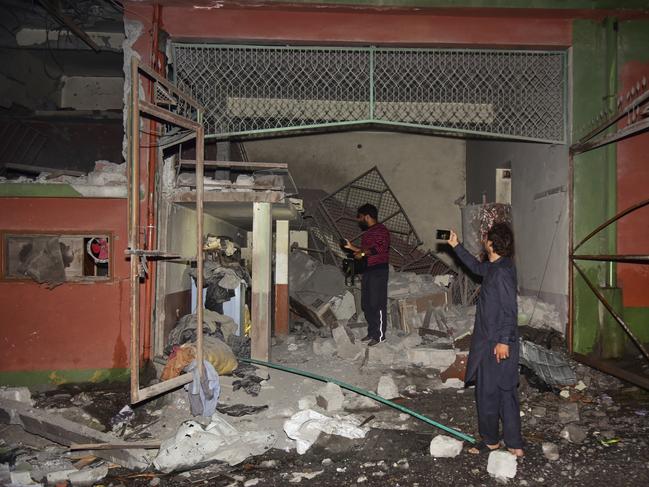Everything you need to know so far about the India-Pakistan crisis
As tensions soar between India and Pakistan, here’s what we know about the shocking and deadly escalation of the long-running conflict.
Asia
Don't miss out on the headlines from Asia. Followed categories will be added to My News.
Tensions between nuclear-armed neighbours India and Pakistan have once again surged to alarming levels, following deadly airstrikes and renewed hostilities over the long-disputed region of Kashmir.
The latest escalation has drawn international concern, with both nations accusing each other of aggression while the human cost continues to rise.
India’s recent military operation, which targeted what it claims were terrorist hideouts across the border, has reignited fears of a broader conflict. Pakistan swiftly condemned the strikes, calling them an “act of war,” and vowed retaliation — marking one of the most volatile flashpoints in the region since the 2019 Pulwama-Balakot crisis.
Here is everything you need to know about the latest situation.
WHY DID INDIA ATTACK PAKISTAN?
The subcontinent is on edge after Pakistan shot down several Indian jets and a drone flying in its air space which were attacking “terrorist camps”.
The Indian bombings, which have killed 26 people including four children, were in response to a Pakistani attack on Indian areas of the disputed Kashmir region in the area that borders both nations.

HOW MANY WERE KILLED IN THE PAKISTAN AIR STRIKE?
At least 43 deaths have been reported so far, with Islamabad saying 31 civilians were killed by the Indian strikes and firing along the border, and New Delhi adding at least 12 dead from Pakistani shelling.
“We make this pledge, that we will avenge each drop of the blood of these martyrs,” Pakistani Prime Minister Shehbaz Sharif said in an address to the nation.
India’s army said it destroyed nine “terrorist camps” in Pakistan in the early hours of Wednesday, two weeks after New Delhi blamed Islamabad for backing an attack on tourists in the Indian-administered side of disputed Kashmir — a charge Pakistan denies.
The largest Indian strike was on an Islamic seminary near the Punjab city of Bahawalpur, killing 13 people, according to the Pakistan military.
Four children were among those killed in the attacks, according to the Pakistan military.
Pakistan also said a hydropower plant in Kashmir was targeted by India, damaging a dam structure, after India threatened to stop the flow of water on its side of the border.
Pakistan has denied any involvement in that assault, which killed 26 people, mainly Hindu men, on April 22.

WHY DID INDIA AND PAKISTAN GO TO WAR?
The conflict stems from a long-standing dispute over the Kashmir region, which both countries claim in full but control in part. Tensions escalated after India revoked Kashmir’s special autonomy in 2019, leading to increased violence and retaliatory strikes.
The recent escalation follows a militant attack in Kashmir that killed 26 civilians, prompting India’s military response.
WHAT IS OPERATION SINDOOR?
India picked the name “Operation Sindoor” for its military action.
Sindoor, a traditional red powder, symbolises marriage for Hindu women, typically applied along the parting of their hair or on the forehead. It is removed upon widowhood.
During the April 22 terrorist attack, many of the victims were Hindu men, leaving behind grieving widows. By naming its response Operation Sindoor, the Indian government signalled a symbolic act of vengeance for those women and the lives lost.
COULD THIS TURN INTO WORLD WAR THREE?
Former Australian Defence Secretary Mike Pezzullo said on Wednesday that it was unlikely that the conflict would escalate into World War Three but there could be miscalculations.
“World War Three would involve many other nations,” Mr Pezzullo said.
“The complicating factor is their possession of nuclear weapons. The key thing to look out for in the next 48 hours is how that escalation is managed.”
India has insisted that its attacks on nine sites inside Pakistan were not targeted at military sites.
WHERE DID THE ATTACKS OCCUR?
The attacks were near Srinagar, the Pakistani capital of Kashmir.
Accounts from India and Pakistan vary, but Pakistan shot down at least two and potentially up to five of the Indian jets involved in the attack.

Mr Pezzullo said this latest confrontation was part of a controlled response from India.
He said that it “from the Indian perspective” that the death toll from an attack blamed on Pakistan forced them to act.
“It was difficult for India to not respond in some way,” he said.
WHAT HAPPENS NOW?
Mr Pezzullo said the defence chiefs of both countries would now be looking to contain the violence.

“When you play a card like that, if the other side were going to escalate further that’s when it gets out of control.
“This would be called a controlled escalation.”
He added that if Pakistan’s leadership felt “humiliation” or “loss of prestige that potentially could lead to a larger war.”
WHEN DID PAKISTAN SPLIT FROM INDIA?
Pakistan became an independent nation on August 14, 1947, following the partition of British India.
The partition led to the creation of two independent dominions, India and Pakistan, resulting in widespread communal violence and the displacement of millions.




